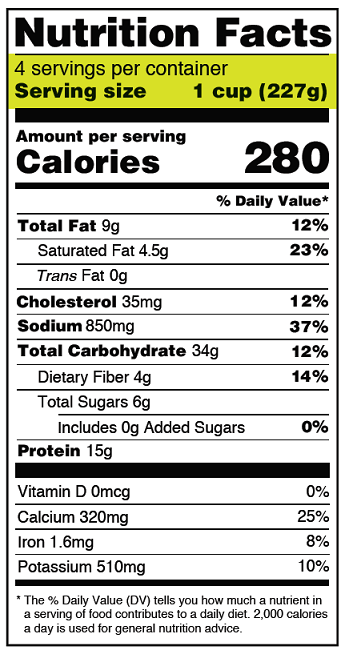 Learn More About the New Nutrition Facts Label" />
Learn More About the New Nutrition Facts Label" />The Nutrition Facts label on packaged foods and drinks makes it easier for you to make informed choices.
Read on to learn more about Serving Size.
 Learn More About the New Nutrition Facts Label" />
Learn More About the New Nutrition Facts Label" />
First, look at the serving size and the number of servings per container, which are at the top of the label. The serving size is shown as a common household measure that is appropriate to the food (such as cup, tablespoon, piece, slice, or jar), followed by the metric amount in grams (g).
The nutrition information listed on the Nutrition Facts label is usually based on one serving of the food; however, some containers may also have information displayed per package.
By law, serving sizes must be based on the amount of food people typically consume, rather than how much they should consume. Serving sizes reflect the amount people typically eat and drink.

Here are a few other things about serving sizes to keep in mind:
In the example below, one serving of lasagna is one cup. If you ate two cups, you would be consuming two servings and two times the calories and nutrients shown on the Nutrition Facts label. Pay attention to the serving size, especially how many servings there are in the food package. Then you might ask yourself, “How many servings am I eating or drinking?”
One Serving
of Lasagna
Two Serving
of Lasagna